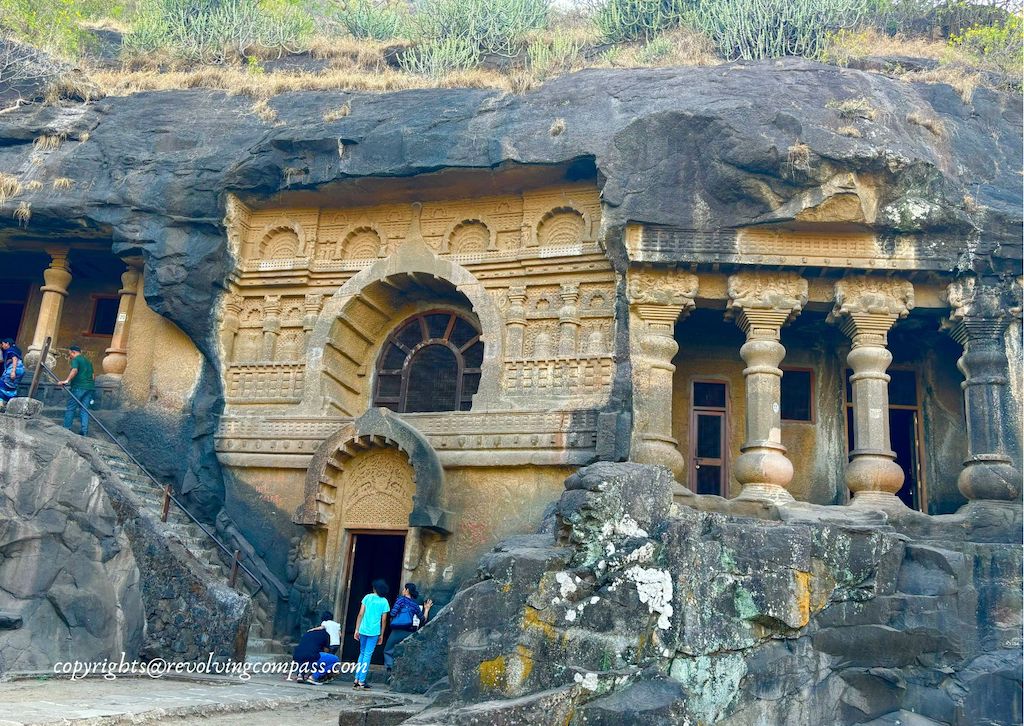While all of us aspire to visit the world famous Ajanta Caves and Ellora Caves, there are so many lesser known and beautiful caves all around Maharashtra. Thus, on our road trip across Maharashtra, we got the opportunity to explore beyond the Ajanta and Ellora Caves. And Pandavleni Caves were part of one such exploration. Located right outside the city of Nashik, right on the NH 161, the Pandavleni Caves definitely deserve a lot of love and affection.
So, let me take you with me on an armchair tour exploring the Pandavleni Caves in Nashik.
But before that, one interesting fact – did you know that of the 1200 or so cave temples in India, almost 800+ are in Maharashtra. These are the monolithic caves carved out of single rock from the mountain. In the BCs, almost 2500-3000 years ago!! And when you look at these caves with this information in mind, you will be blown away by their precise and artistic carvings, fine details and double or triple floor structures!!
Table of Contents
How to reach Pandavleni Caves Nashik
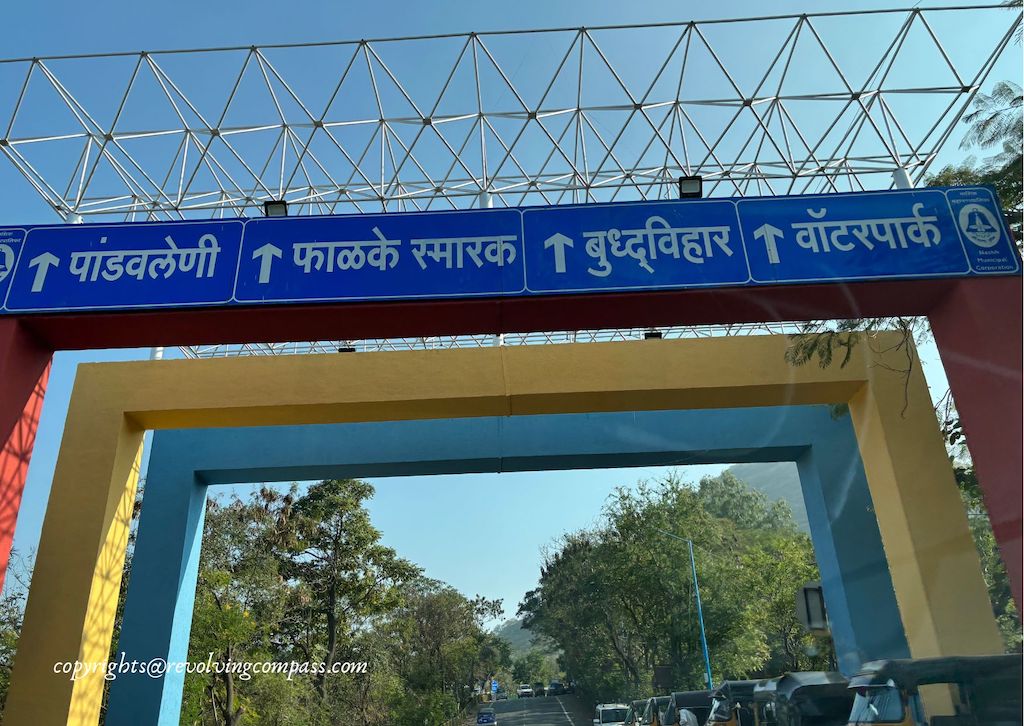
Entrance Ticket to Pandavleni Caves Nashik is INR 25 per adult and free for kids below 15 years of age.
Visiting hours of Pandavleni Caves Nashik is from 8:00am to 6:00pm
Time required to visit Pandavleni Caves is around 2 hours
A tour through the Pandavleni Caves Nashik
We visited the Pandavleni caves on our way from Lonavala to Nashik. The day before in Lonavala, we had visited the Karla Caves and Bhaja Caves. And somehow, I was thinking the Pandavleni were going to be similar. Or, like the Udayagiri Caves that I visited while on a road trip from Orchha to Bhopal via Sanchi and Vidhisha on my MP Road Trip. But turns out they had many surprises for me. Read on to know more.
There is ample parking in a parking lot at the foothills of the Pandavleni Caves. We parked our vehicles here and proceeded to the foothills. Its just a 300 meters walk from the parking lot. And the stairs start from there.
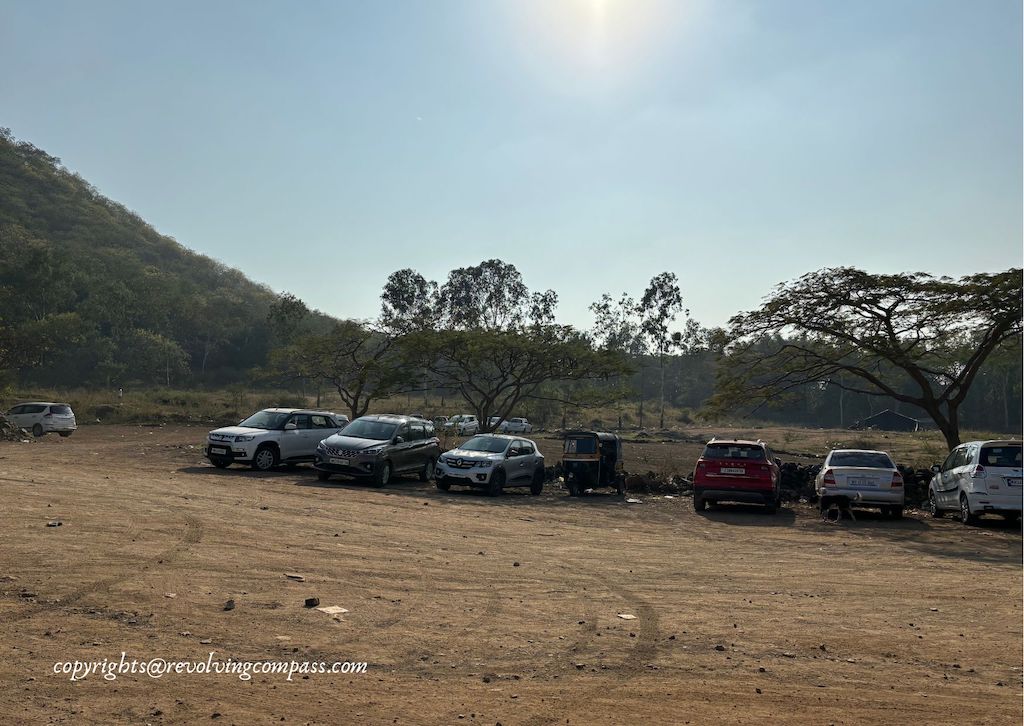
We climbed the 200+ stairs to Pandavleni Caves steadily and slowly. And reached the top in around 10 mins. In between we also stopped for wonderful views of the town of Nashik from up above. Also, there are a lot of boards on the way where information about these caves and other caves of Maharashtra is displayed. I often stopped to read those boards.
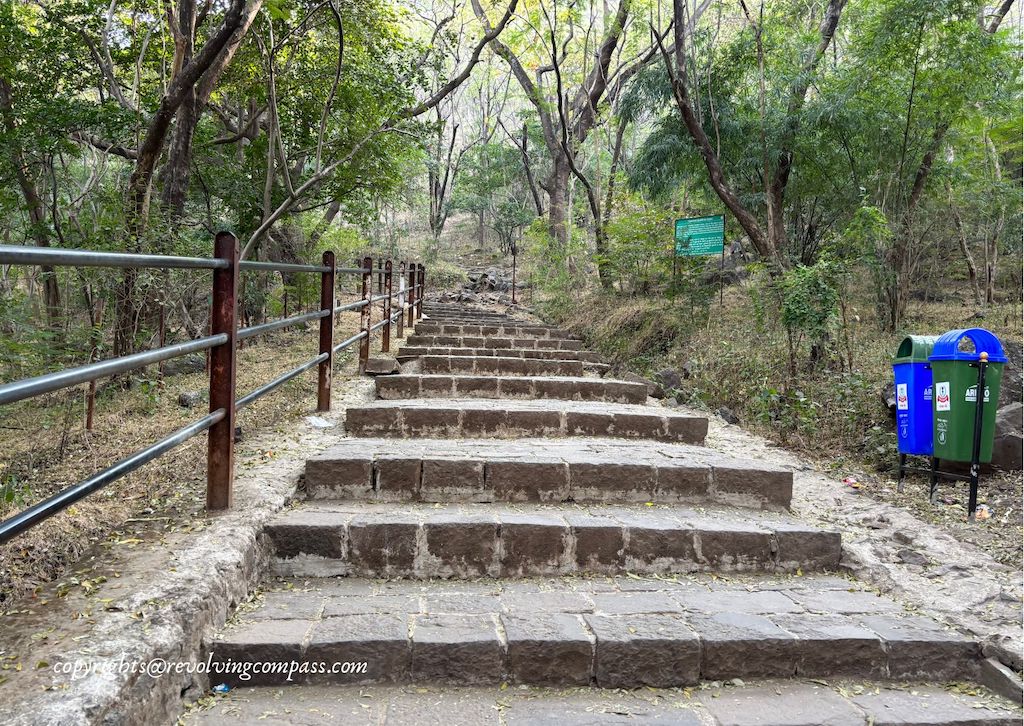
As we reached the top, we got the tickets to the caves. And then entered inside.
Like everywhere else, the first cave, right in front of us, was the most massive of all. Overall they are a group of 24 caves carved out of monolithic rock structure. And built around the 1st century BCE. They are also called the Trirashmi caves or the Nashik Caves.
Cave 1
Not a very prominent structure, it looks like an incomplete vihara. With mostly rectangular pillars supporting the front and some inscriptions on top of those pillars.
Cave 2
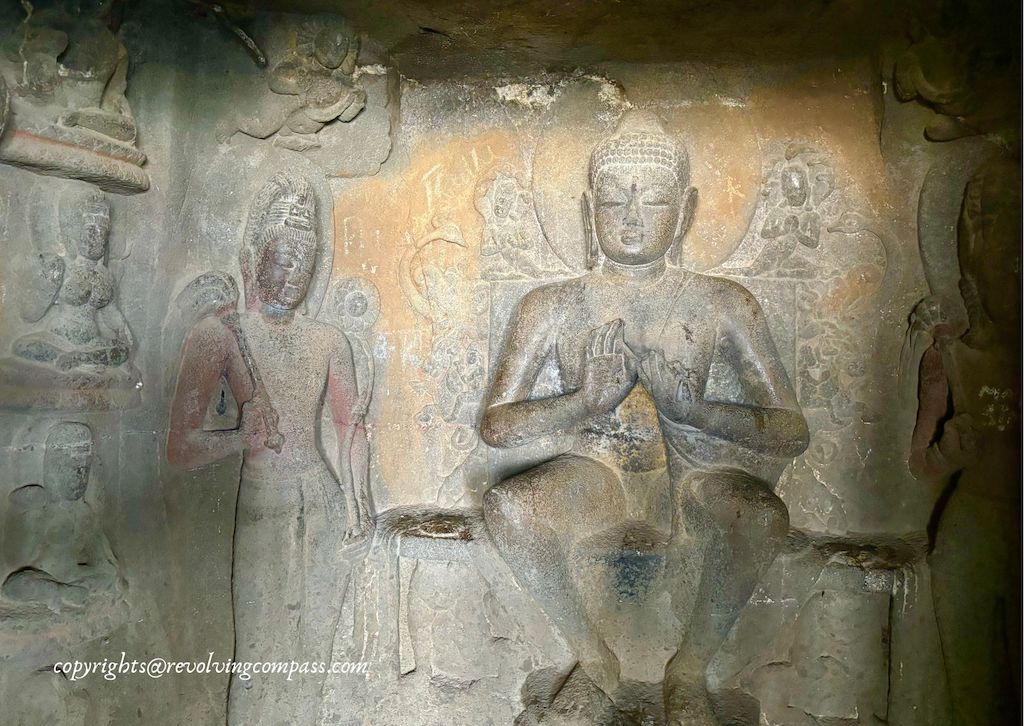
This Nasik cave has sculptures of Buddha with his disciples in sitting and standing form.
Cave 3
Of all the caves, Cave no 3 has some very interesting and elaborate sculptures. The sculptures on this and the other caves represent the time and life of kings, Buddhist Monks, general public like the farmers and also the practices followed at that time.
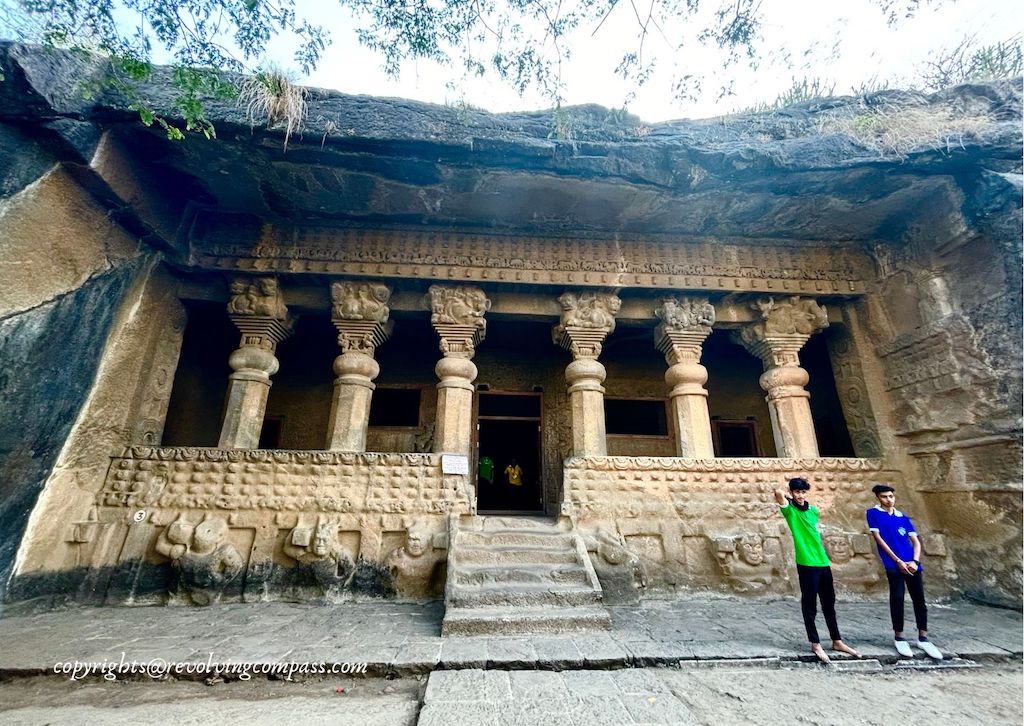
There is a verandah supported by ornate pillars in front of this cave. The top of the pillar has animal carvings. And then an inner chamber. On the door of the room you can see a Bodhi tree, the dagoba, and the chakra carved out.
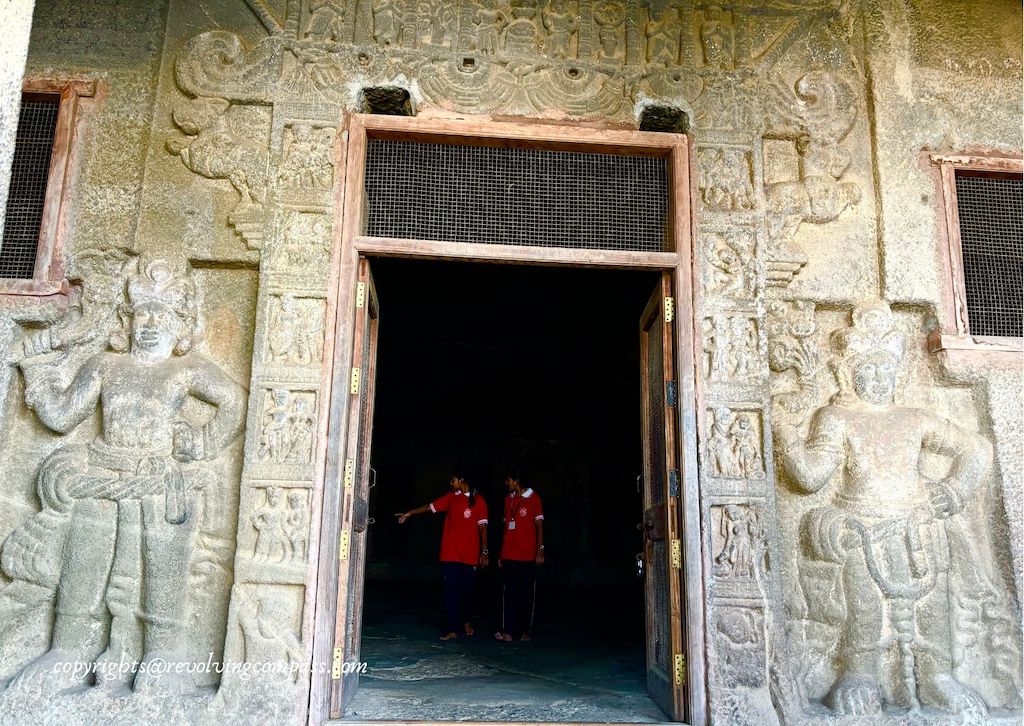
The inner chamber is very large and has multiple smaller chambers all around it. These must have been rooms used either for meditation or for residing.
Caves 4 to 9
These are much simpler in their appearance. The pillars at cave 4 look similar to those at cave 3. But it’s inner chambers are not as large. While cave 6 has some distinct inscriptions on it. Mostly these inscriptions quote the person who commissioned the formation of the particular cave.
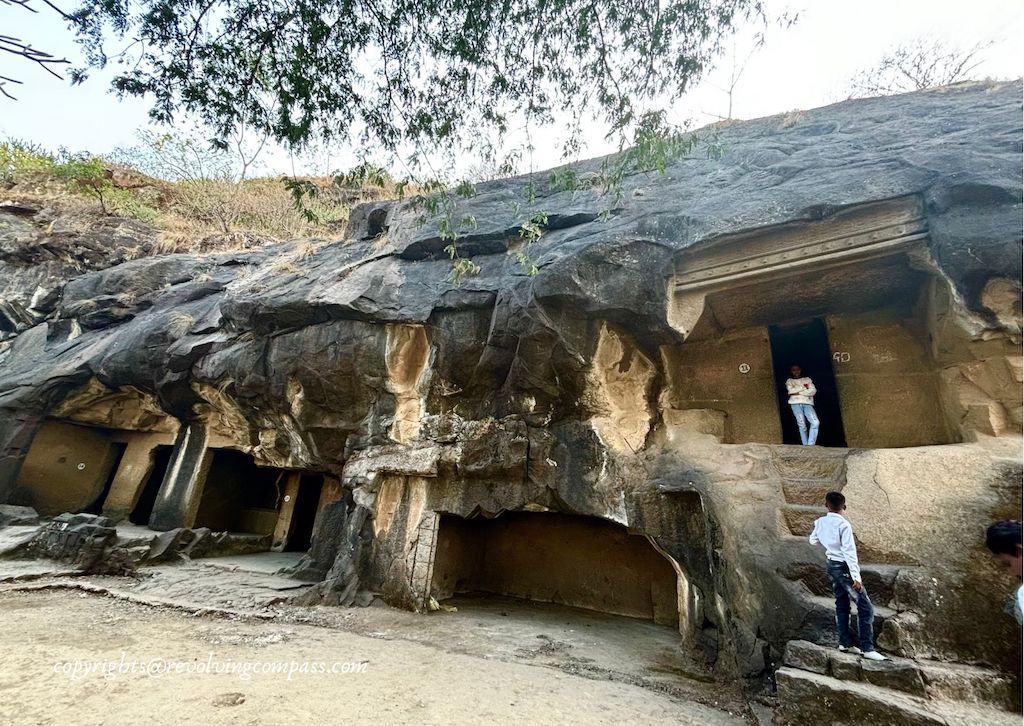
Cave 10
The second largest cave at Pandavleni is Cave 10. It is very similar to cave 3 in it’s appearance. With the same kind of varandah with ornated pillars, and a large central hall inside with smaller chambers all around it. The inscriptions on these caves suggest they are dedicated to the Nahapana rule.
Cave 11
A Jain cave, whose inscriptions and sculptures indicate late Jain art, cave 11 has some distinct carvings that you will not find in any other caves.
Cave 12 – 14
The cave no 12, 13, 14 lie very close by. While 12 and 13 are small, cave 14 has some really large life-size carvings of Buddha in both sitting and standing position along with his disciples.
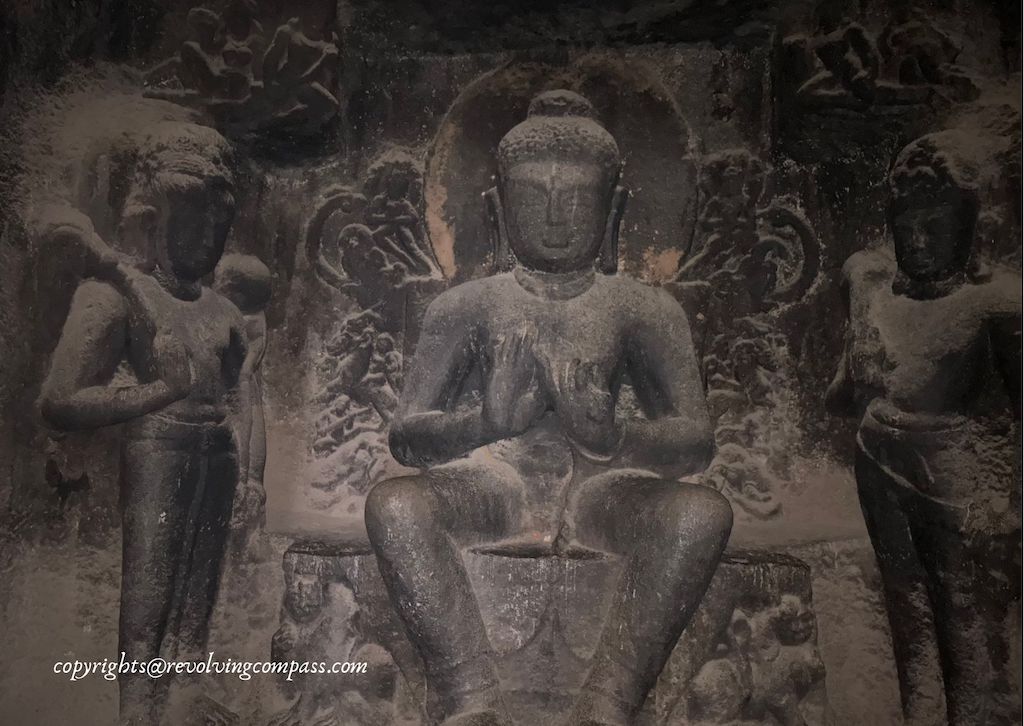
Cave 15 and 16
Cave 15 is also very similar to cave 14 in it’s sculptures, including standing and sitting Buddhas. While Cave 16 is very plain.
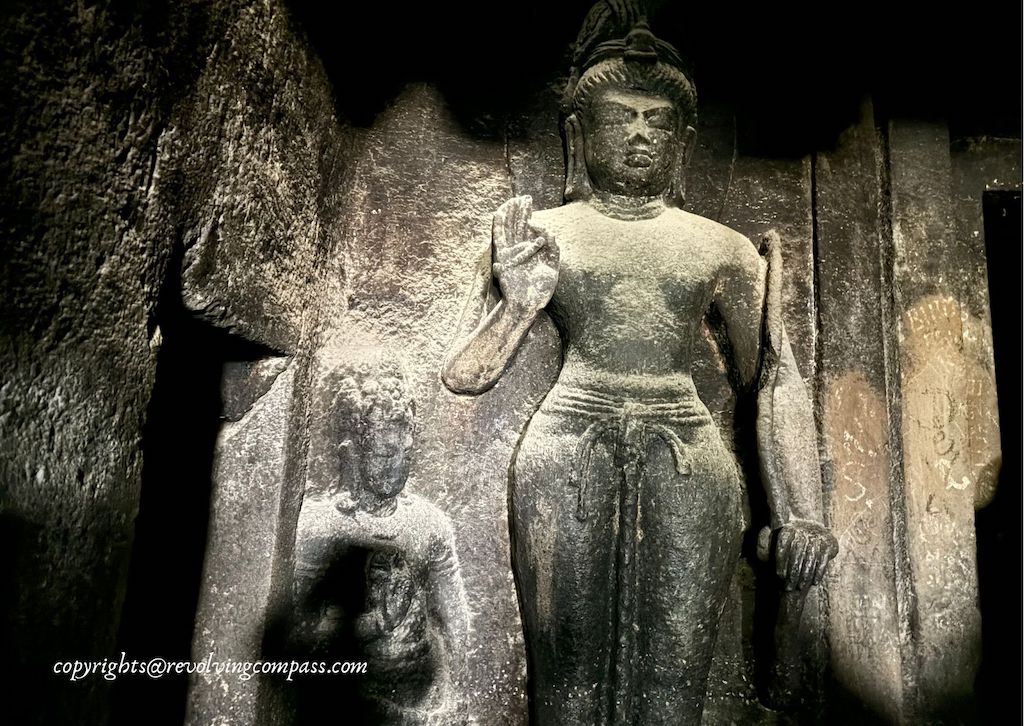
Cave 17
Although the third largest cave, cave 17 has most of it’s parts unfinished. Yet, the pillars at the entrance are very impressive. Although the Verandah is small, the inner hall is comparable to those of cave 3 and 10 and also very similar in it’s outlook.
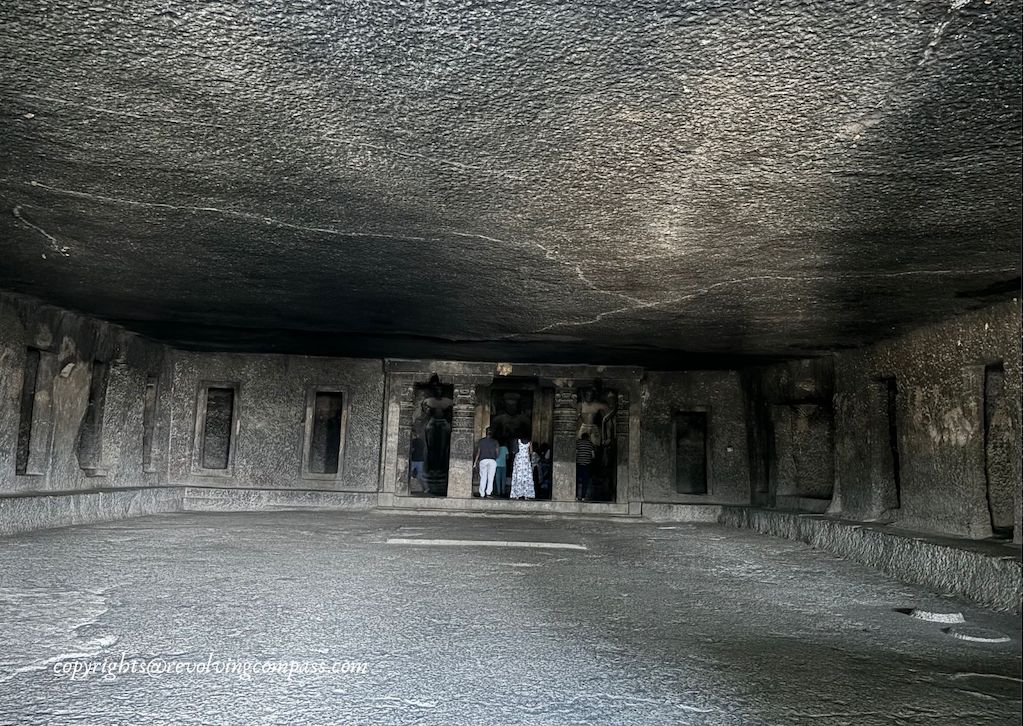
Cave 18
Cave 18 is a Buddhist Chaitya (A prayer hall) while rest all are viharas (meditation and residence rooms). It has striking similarity to Karla Caves including the large central stupa inside. And seems it was built around the same time as the Karla Caves. Also, it has a statue of Buddha and Tirthankars as well.
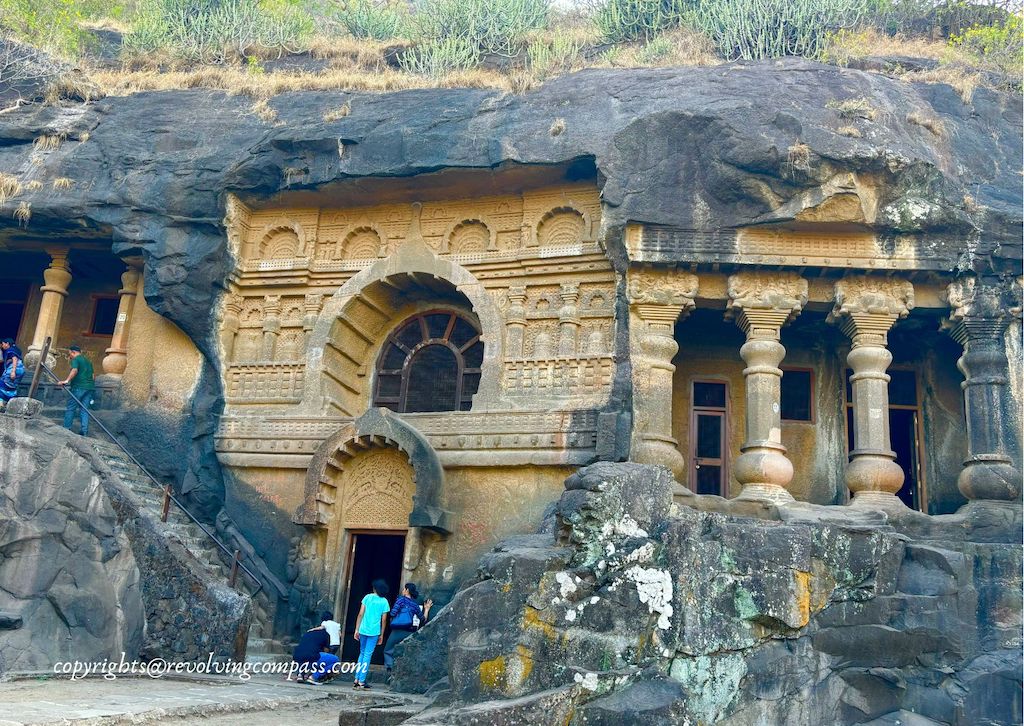
The door of this cave is the most impressive of all. It will surely remind you of the massive entryway to the Petra Structures in Jordan.
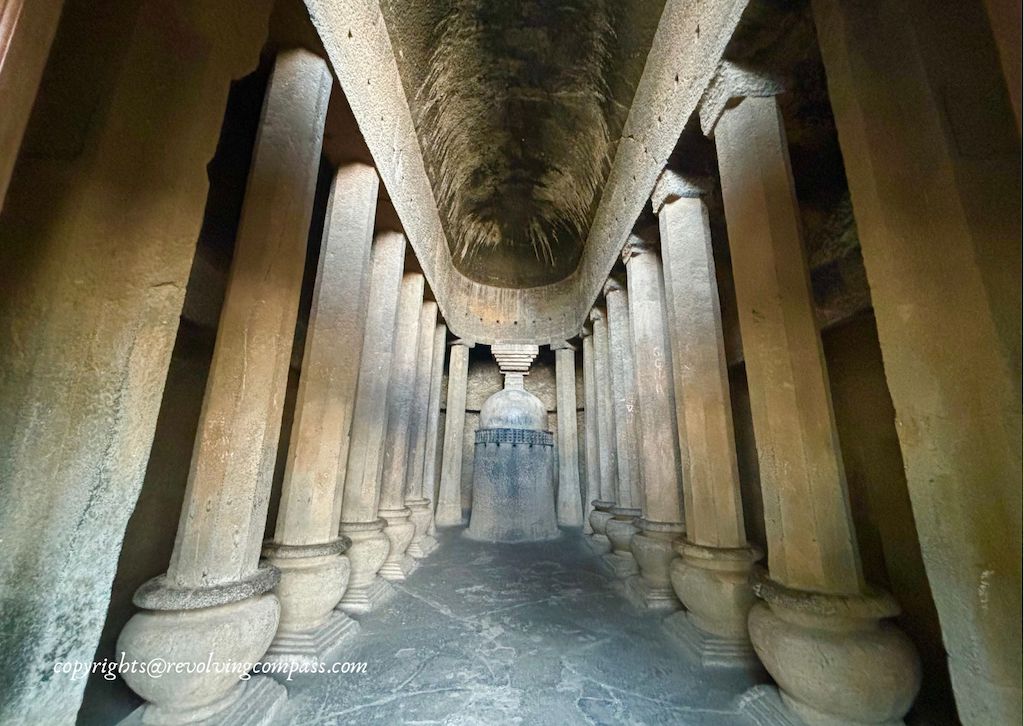
Cave 19-24
Out of caves 19 to 24, most are plain structures and resemble closely to each other. With the only exception of cave 23 where you will see ornate relics on the walls both outside and inside the cave. Which also include sculptures of the Buddha along with Padmapani and Vajrapani. This is the only cave where you will also witness a “reclining Buddha” which is a popular form of Buddha attending nirvana. And is highly worshipped in the temples of Thailand including those in Bangkok and the Chiang Mai Temples, or even the temples in Sri Lanka.
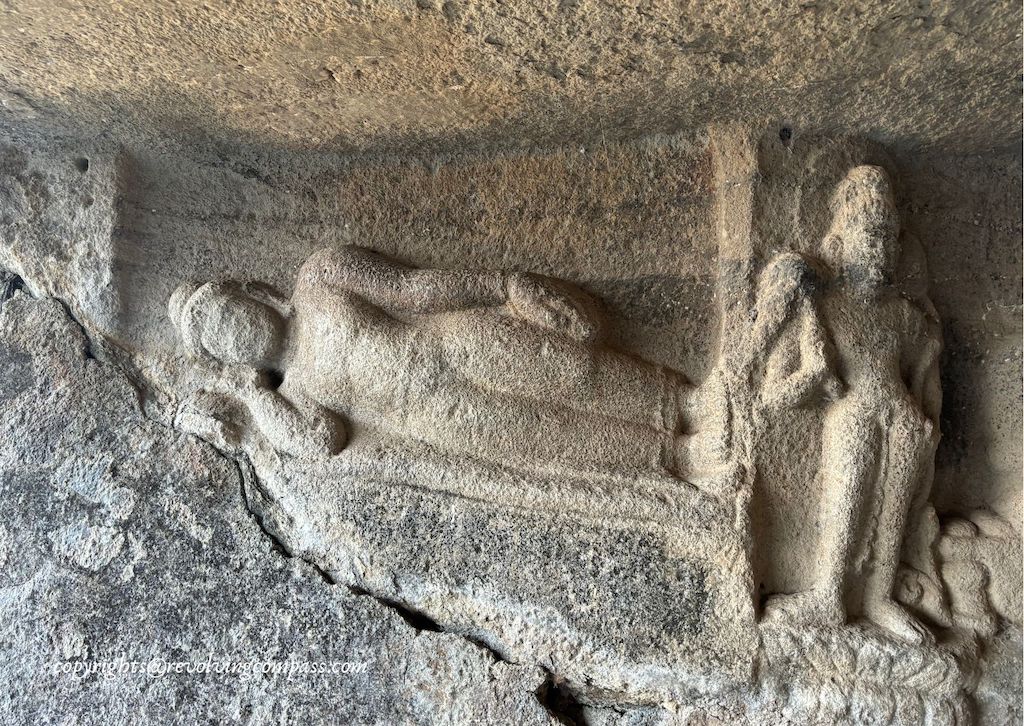
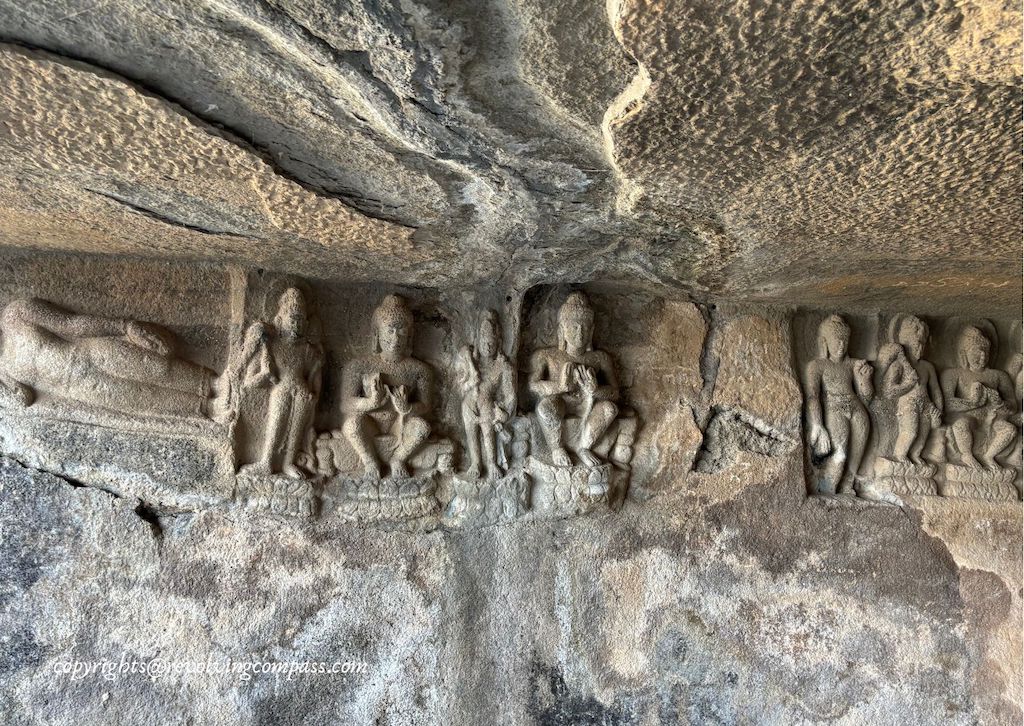
There are just a few idols of Buddha and Bodhisattava in Cave no 24 as well. But it is a very small cave. Perhaps it was used as a residence.
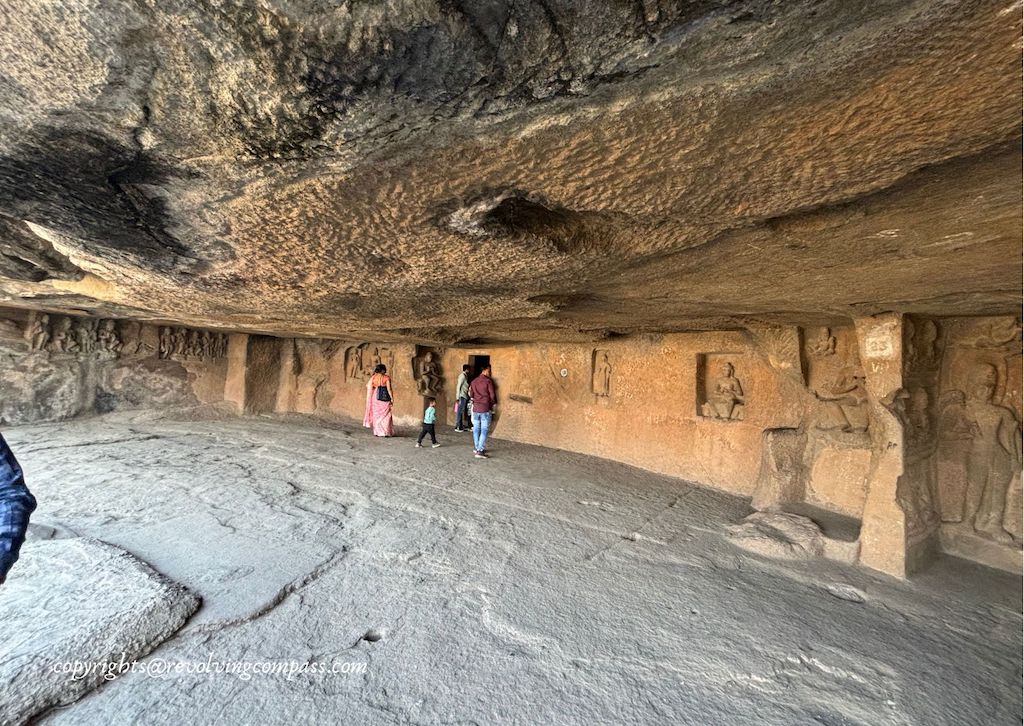
When is the best time to visit Pandavleni Caves Nashik
Winter months and monsoon months are both considered as good time to visit Pandavleni Caves Nashik. So you can visit anytime from August – February. Summer time from March – June the temperature can really sore up. But you should still be able to visit the caves in early morning hours or evening after 5:00pm.
Where to stay in Nashik
Nashik is very famous for it’s vineyards. Many of them have top notch resorts right inside the vineyard for a perfect staycation. Some of the well known ones are Source at Sula located right in the middle of the plantations, Soma Vine Village. And Beyond by Sula – which is very near to the Gangapur Lake, and Vellona Vineyards. Then there are some great hotels in the city including Ibis, Express Inn and Radisson.
We stayed on the outskirts of the city to avoid the city traffic everytime we ventured out. At Express Inn Nashik. There are lots of other hotels at this stretch as well. It was located just 2 km from Pandavleni Caves. The hotel was good, with decent rooms and widespread breakfast menu that we thoroughly enjoyed.
Here’s a complete list of accommodations in Nashik.
How to reach Nashik
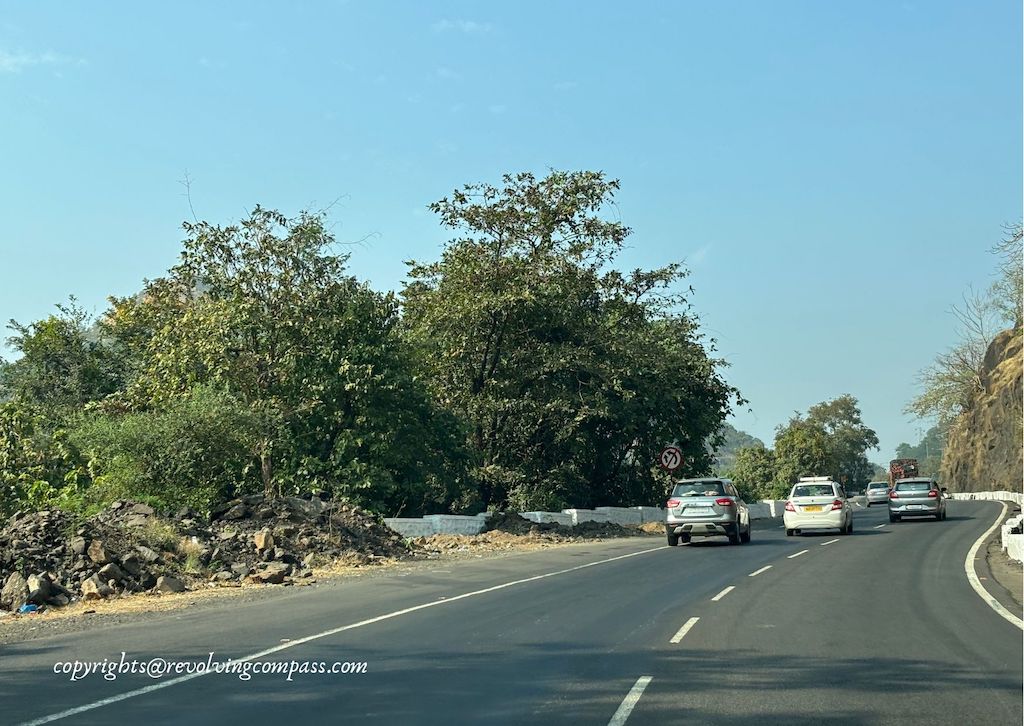
Nashik has an airport that connects it to most of the other airports in India. It is also well connected by road and rail from Mumbai and Pune. Since it is a major city and there’s a lot to do here, there are plenty of options to commute as well as for food or stay. You can hire a cab, rent a car and self drive or take a local taxi through your accommodation for just the activities that you want to do.
What are some of the other things to do in Nashik
There are a lot of other things to do in Nashik and places to see in Nashik in a day apart from the Pandavleni Caves. Some of the top ones, that we also experienced include –
- Spend a day in a Nashik Vineyard and take a winery tour along with wine tasting
- Experience a stay in a lush green Nashik Vineyard – like a stay in a vineyard in Tuscany
- Visit the Trimbakeshwar Temple – one of the 12 jyotirlinga temples of India and a very important Hindu pilgrimage destination. And some other old temples in Nashik.
- Do boating on the Gangapur lake besides Gangapur dam on river Godavari through MTDC Boat Club. The place is good to even just chill out and relax or have some mouth watering snacks at a very pocket friendly price.
- From Nashik you can do a day trip to Shiradi as well to visit this pilgrimage place.
General tips on visiting Pandavleni Caves
- Wear comfortable shoes as there will be lots of steps to climb till the top of the hill where the Pandavleni caves are located
- You should also carry a bottle of water with you to keep you hydrated along the incline
- The trek is moderate, we had our parents and kids with us. Everyone was able to trek without any discomfort.
- Visiting during the early morning and late evening hours will be more comfortable as the days will be hot. But morning and evening are more pleasant
- Wear comfortable cotton cloths on your way to Pandavleni Caves to avoid discomfort due to hot weather
- There are lots of vendors on the foothill where the trek starts selling juices, snacks and water bottles. In case you want to grab anything
- Restroom facility is also available at the foothill of the cave
- The ticket counter is located some steps below the entry to the cave, you can obtain your ticket from there.
